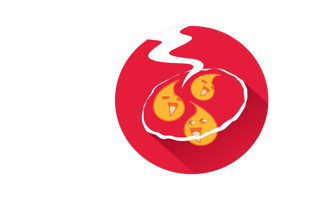Cold pasteurization technology based on UV light
AseptoRay has developed a proprietary cold pasteurization technology based on Ultraviolet light. While traditional UV has been used to treat liquids, it has been limited to clear liquids (primarily water). AseptoRay has taken UV technology a step forward and created a unique technology which enables UV treatment of a range of liquids, including turbid liquids.
AseptoRay system description
The core of AseptoRay’s technology is based on hydrodynamics and fluid dynamics. The fluid dynamic model increases the time that particles are on the tube’s surface, which in turn enhances the efficiency of the UV dose. In parallel, the hydrodynamics verify that the liquid is exposed to the required UV dose. In addition, a mathematical algorithm analyzes the product’s viscosity and other rheological properties. The AsetpoRay platform uses UV lamps that generate monochromatic UV at 254 nm, a wavelength known to affect DNA sequences and to inactivate bacteria by preventing their replication. The 254 nm wavelength combined with the exact UV dose, yields effective microbial elimination.
Peer Review article:
“Beverages” magazine, “IUVA” magazine and “Food Safety Magazine” published a peer-review articles finding AseptoRay “a viable alternative to high pressure processing (HPP) for improved microbial safety of fresh green juice blends” with improved shelf life, very minor effect on nutrients, and no affect on taste and organoleptic properties
Download the article: http://www.mdpi.com/2306-5710/4/2/29
Download Brochure

Increased shelf life
AseptoRay’s pasteurization technology yields superior microbial results. It eliminates heat resistant spores, yeasts and molds, which significantly increases the product’s shelf life

Energy saving
A 73% reduction in direct energy costs compared to thermal pasteurization, and dramatic decrease in costs compared to High Pressure Processing (HPP) -0.34 cents/gallon using AseptoRay vs. 130 cents/gallon using HPP.

Organic and natural
Unlike thermal pasteurization (which heat and then cool down the products), cold pasteurization doesn’t change the natural make up of the treated products. As a result, the nutritional benefits remain the same and there are no organoleptic changes (i.e. the taste and odor are unchanged). This process greatly appeals to consumers searching for healthier and less processed foods and beverages which contain less preservatives.
